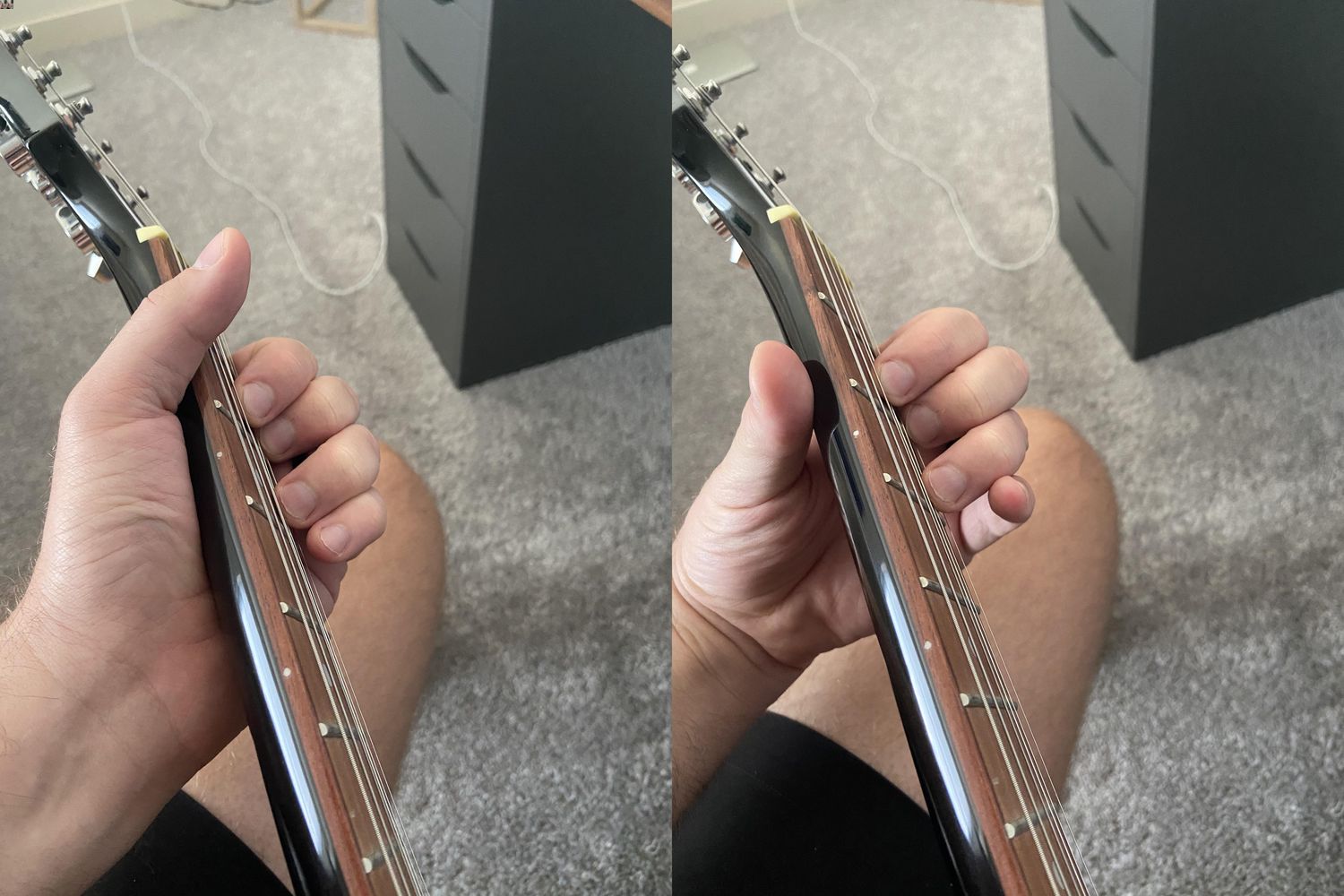Home>Devices & Equipment>Microphone>How To Hold Microphone While Singing


Microphone
How To Hold Microphone While Singing
Published: February 17, 2024
Learn the best techniques for holding a microphone while singing to improve your performance and stage presence. Master the art of microphone handling.
(Many of the links in this article redirect to a specific reviewed product. Your purchase of these products through affiliate links helps to generate commission for AudioLover.com, at no extra cost. Learn more)
Table of Contents
Introduction
When it comes to delivering a captivating vocal performance, holding the microphone correctly is a crucial yet often overlooked aspect. Whether you are a seasoned performer or just starting your musical journey, understanding the proper techniques for holding a microphone while singing is essential for achieving optimal sound quality and stage presence.
Many aspiring singers underestimate the impact of microphone handling on their overall performance. The way you hold the microphone can significantly affect the clarity of your vocals, the consistency of sound projection, and your ability to engage with the audience. By mastering the art of holding a microphone, you can elevate your stage presence and deliver a more polished and professional performance.
In this comprehensive guide, we will delve into the importance of holding the microphone correctly, explore different types of microphones and their handling, and provide valuable insights into the proper techniques and tips for holding a microphone while singing. Whether you are performing in a small venue or on a grand stage, the knowledge and skills you gain from this guide will undoubtedly enhance your vocal prowess and stage charisma.
Importance of Holding the Microphone Correctly
The manner in which you hold a microphone can significantly impact the quality of your vocal performance. Proper microphone handling is crucial for several reasons:
- Sound Quality: Holding the microphone correctly ensures that your voice is captured clearly and accurately. Improper handling can lead to muffled or distorted sound, affecting the overall quality of your performance.
- Consistent Sound Projection: By holding the microphone at the appropriate distance and angle, you can maintain consistent sound projection throughout your performance. This is essential for ensuring that your voice carries effectively to the audience without sudden volume fluctuations.
- Stage Presence: The way you hold the microphone contributes to your stage presence and overall charisma as a performer. A confident and polished microphone technique can enhance your visual appeal and command attention from the audience.
- Engagement with the Audience: Proper microphone handling allows you to interact seamlessly with the audience. Whether you are making eye contact, gesturing with your free hand, or moving across the stage, a secure grip on the microphone ensures that you can engage with the crowd without compromising sound quality.
- Professionalism: Mastering the art of holding a microphone demonstrates your professionalism and attention to detail as a performer. It showcases your dedication to delivering a top-notch performance and leaves a lasting impression on your audience.
Ultimately, holding the microphone correctly is not just a technical requirement; it is a fundamental aspect of stagecraft that can elevate the impact of your vocal delivery and enhance your overall performance.
Different Types of Microphones and Their Handling
Microphones come in various types, each with its unique design and intended application. Understanding the differences between these microphones and how to handle them is essential for singers and performers. The two primary types of microphones used in live performances are dynamic microphones and condenser microphones.
Dynamic Microphones: These microphones are rugged and versatile, making them well-suited for live performances. They can handle high sound pressure levels and are less sensitive to loud, booming sounds. When using a dynamic microphone, it is important to hold it firmly but not too tightly. Gripping the microphone too firmly can lead to handling noise, which may be picked up by the microphone and transmitted through the sound system.
Condenser Microphones: Condenser microphones are known for their sensitivity and high-quality sound reproduction. They are often used in studio recordings and more controlled live performance settings. When handling a condenser microphone, a gentle and steady grip is essential. Due to their sensitivity, condenser microphones can capture subtle nuances in the voice, making them ideal for acoustic performances and vocal-centric presentations.
Regardless of the microphone type, proper handling techniques include maintaining an appropriate distance from the microphone, avoiding obstructing the grille (the part of the microphone that captures sound), and minimizing unnecessary movements that could introduce handling noise.
Furthermore, some microphones feature specific polar patterns, such as cardioid, supercardioid, or hypercardioid. Understanding the polar pattern of a microphone is crucial for optimizing its performance. For example, a cardioid microphone is most sensitive to sound from the front and less sensitive to sounds from the sides and rear. Singers should position themselves accordingly to take full advantage of the microphone’s polar pattern and minimize the risk of feedback and unwanted noise.
By familiarizing yourself with the different types of microphones and their respective handling requirements, you can make informed decisions about microphone selection and employ the most effective techniques for delivering stellar vocal performances.
Proper Technique for Holding a Handheld Microphone
When it comes to holding a handheld microphone, mastering the proper technique is vital for achieving optimal sound quality and stage presence. Whether you are performing at a live concert, a karaoke night, or any other event, the following guidelines will help you hold a handheld microphone with confidence and finesse:
- Secure Grip: Hold the microphone firmly but not too tightly. A secure grip ensures stability and control while minimizing the risk of handling noise. Avoid gripping the microphone near the grille, as this can interfere with sound transmission and lead to muffled or distorted audio.
- Positioning: Position the microphone at a slight angle, pointing it towards the corner of your mouth. This angle helps prevent plosive sounds (such as “p” and “b” sounds) from hitting the microphone directly, reducing the likelihood of unwanted popping noises in the audio signal.
- Distance: Maintain an optimal distance between your mouth and the microphone. This distance may vary depending on the microphone type and your vocal projection. As a general rule, keeping the microphone approximately 2-3 inches away from your mouth allows for clear sound capture while minimizing the risk of breath noises and sibilance.
- Free Hand Gestures: If you need to use gestures or perform with your free hand, avoid obstructing the microphone or covering the grille. Practice moving your hand gracefully and purposefully, ensuring that your gestures complement your performance without interfering with the microphone’s function.
- Microphone Cable Management: If the microphone is connected to a cable, be mindful of cable management to prevent tripping hazards and ensure uninterrupted mobility on stage. Secure the cable along your clothing or use a cable clip to minimize movement-related noise and maintain a tidy appearance.
By adhering to these techniques, you can harness the full potential of a handheld microphone, delivering a polished and professional vocal performance while engaging with your audience confidently and effectively.
Tips for Holding a Microphone While Singing
Mastering the art of holding a microphone while singing involves more than just technical proficiency; it encompasses stage presence, audience engagement, and the seamless integration of the microphone into your performance. Here are some valuable tips to elevate your microphone handling skills and enhance your overall singing experience:
- Maintain a Relaxed Posture: Stand or move with a relaxed and natural posture, allowing your body to move freely while holding the microphone. Tension in your body can translate into handling noise and affect the clarity of your vocals.
- Practice Mic Techniques: Dedicate time to practicing microphone techniques during rehearsals. Experiment with different hand positions, angles, and distances to find the most comfortable and effective approach for your singing style.
- Engage with the Audience: Use the microphone as a tool to connect with your audience. Make eye contact, express emotion through your vocals, and utilize the microphone to modulate your voice for dramatic effect, drawing the audience into your performance.
- Adapt to Different Microphones: Familiarize yourself with various types of microphones to adapt quickly to different equipment. Whether you encounter dynamic, condenser, or wireless microphones, understanding their characteristics and handling requirements will empower you to deliver consistent performances across diverse settings.
- Monitor Your Sound: Pay attention to your sound as you sing. Adjust your microphone technique based on the venue’s acoustics, the volume of the backing music, and the dynamics of your vocal delivery to maintain a balanced and clear sound.
- Utilize Mic Stands and Holders: If you have the option, consider using a mic stand or holder for added stability. This can free up your hands for expressive gestures and movements, allowing you to focus on delivering a captivating performance without the need to constantly hold the microphone.
- Embrace Confidence and Charisma: Project confidence and charisma through your microphone handling. A poised and assured grip, coupled with expressive body language, can amplify the impact of your performance, captivating your audience and leaving a lasting impression.
By incorporating these tips into your singing practice and live performances, you can harness the full potential of the microphone as a versatile instrument for artistic expression, amplifying the emotional depth and power of your voice while captivating and enthralling your audience.
Conclusion
Mastering the art of holding a microphone while singing is a multifaceted skill that extends beyond technical proficiency. It encompasses the seamless integration of the microphone into your performance, enhancing your stage presence, and fostering a deeper connection with your audience. By understanding the importance of proper microphone handling and implementing the appropriate techniques, you can elevate your vocal performances to new heights.
From the nuanced grip of a handheld microphone to the adaptability required for different microphone types, the knowledge and skills gained from this guide empower you to navigate diverse performance scenarios with confidence and finesse. Embracing a relaxed posture, engaging with the audience, and adapting to varying microphone setups are integral aspects of honing your microphone handling prowess.
Ultimately, the microphone becomes an extension of your artistic expression, allowing you to convey emotions, dynamics, and nuances in your vocal delivery with precision and impact. Whether you are performing in intimate acoustic settings or commanding a grand stage, the mastery of microphone handling enhances not only the technical aspects of your performance but also the emotive and captivating essence of your artistry.
As you continue to refine your microphone handling skills, remember that practice and experimentation are key. Embrace the opportunity to rehearse with different microphones, explore various techniques, and infuse your performances with confidence, charisma, and authenticity. By doing so, you will not only deliver exceptional vocal performances but also forge a profound and lasting connection with your audience, leaving an indelible impression with every note you sing.











